|
My story begins with UN SDGs when I took the Sustainable Development Goals course on the Microsoft Community and felt its importance for raising awareness of our community in Egypt and all over the world.
So, I began to think of a project to share the importance of SDGs generally and how some of these goals can be achieved through solving desertification which is both one a local and global issue. Desertification has become a big problem in Egypt, specially in my city Damietta because we are located on the Delta and River Nile. I began to teach the SDGs for my students (Primary and Intermediate levels from 8–15 years old) and asking them to research the importance of the SDGs by using Microsoft tools and by creating simple drawings through using this link: https://sustainabledevelopment.un.org/sdgs.
You can follow our progress in Egypt through this Padlet:
Some countries have already begun carrying out the project steps like India, Sri Lanka and Argentina.
You can follow everything through this link: https://padlet.com/ezatrania/1m8xbolszum6 Other countries as Canada, Kenya, Lebanon, Indonisia, Philippine ,UAE and Qatar will carry out when back to school next Septmber2017. Now we are working on creative solutions to achieve these goals and solve the problem of Desertification using Minecraft game for Primary Stage and planting some types of plants from Science Faculty in Damietta in a small area in our School ( El Kafrawy Language School). Besides I’m joining two global projects : 1. A Virtual UN Model Assembly By Maria Flor Conforti .( Goal 2 ) Zero Hunger . https://education.microsoft.com/Story/SkypeCollaboration?token=V6lew 2. Climate Action ( Goal 13) By Koen Timmers. It will be carried out 2nd October.My students are already preparing their work for them. 
Rania Ezzat received her Post Graduate Diploma in Curriculum & Instruction Methodology and is preparing for her Master's in Education Technology. She is an EFL Head Teacher, and she has received awards in Kuwait and certifications from AUC and Microsoft. In June 2017, Rania was named the Sway Award Winner for her lesson on desertification from Microsoft which can be viewed HERE. Rania is a TeachSDGs Ambassador and is committed to bringing the SDGs to classrooms of the world. You can connect with Rania on Twitter at @ezatrania2.
 By Francis Jim B. Tuscano, TeachSDGs Ambassador, Edtech Specialist, Philippines The world has been in a quest for peace for so long. People of every color have given much effort. We have engaged in long and meaningful discourses, planned, and executed national and local actions to attain what humanity has been longing for. In some nations, these efforts were successful, proving that peace is a strong and essential driving force towards progress and development. As time passes by, some peaceful countries suddenly find themselves at the frontline, as these nations guard and fight to maintain and eliminate threats to their nation’s peaceful existence. For some, peace has been very elusive. The struggle has caused divisions in their society, destruction of infrastructures and resources, denial of people’s basic rights, and worst of all, disrespect to and loss of human lives. Role of Education in the Quest for Peace The United Nations was fundamentally formed to maintain peace in our planet. Throughout the years, the UN has continued to prioritize the quest for a peaceful coexistence in this shared world. In 2015, the UN outlined peace as an area of critical importance in the Sustainable Development Goals (SDGs). To be more specific, the UN member nations target to attain, by 2030, peaceful, just, and inclusive societies, free from fear and violence. This goal acknowledges peace as a basic and essential element for progress and development to happen in every human society. SDG 16 focuses on this global quest for peace. In this quest for peace, education plays an essential role. Whether through formal or informal learning or education, peace is taught as a universal value that must be integrated into the curriculum and to the learning process. Right now, this is something that all education systems in every nation should seriously consider. In the school where I currently teach, Xavier School in the Philippines, peace education takes various forms. In the younger years, students first begin to learn about the importance respecting others, the skill to manage and resolve conflicts, and the goodness of showing kindness to every person one meets, whether the person is your friend or a stranger, young or old. We acknowledge that these are essential and fundamental values and virtues that help create a peaceful classroom, school, home, or neighborhood. As the the students mature and move into higher levels, they are introduced to and made aware of the major conflicts that involve the bigger societies, nations, or groups throughout history. Disciplines such as the Social Sciences are often the designated subject areas that would push academic discussions and reflections on threats to and issues about peace and justice. Students in the higher grade levels engage in discourse, research, problem-solving, and advocacies that would contribute to the attainment of a peaceful and just nation. Together with other disciplines such as the Religious and Values Education and the Guidance Departments, students gain skills to become promoters of peace or as we say, “peacemakers.” Using Visual Arts to Promote Peace Awareness and Action Visual arts, which covers traditional fine arts such as drawing, painting, and sculpture among others, is known to promote and develop creativity among learners. Through the skills taught in visual arts, learners can create products that reflect the reality that they are living in, the aspirations they are genuinely working for, and the ideas and emotions that occupy their reflections. Young learners who are attending visual arts classes also experience a different kind of fun and form of self-expression. When students are asked which they would prefer among the different academic disciplines, Arts would be a favorite answer, since it does not asked for a very rigid way of learning as experienced in the more concept and skilled-based subjects. It is in arts that they learn about creativity and experience freedom of self-expression. Taking advantage of this, my team and I developed an arts activity that would engage young learners into a discussion about peace and justice. This project was very timely since the Philippines, where my students and I reside, has been in a long quest for a lasting experience of peace, especially in the war-torn parts of Mindanao Island in the southern area of the country. Hands for Peace Project The arts activity was called the “Hand for Peace Project.” The project had two-fold objectives - first, to make the students in Grades 2 to 4 aware of SDG 16 and of the need for peace in Mindanao, especially in the war-torn Marawi City and second, to ask the students to become promoters of peace in the different communities that they belong to, such as in school, neighborhoods, or even simply, in their families. The project made use of station or base system to execute the various activities. Base 1: Awareness and Empathy Station For the first station, the main objective was to introduce the young learners to the extreme condition of the war-torn city of Marawi in Mindanao. The city has been an area of conflict since May 2017 when a local rebel and ISIS sympathizer group, called the Maute, took control of the city. Up to the writing of this article, the Armed Forces of the Philippines, as well as the national police group, continues to engage the rebel group in a deadly battle for the city. Local residents have been evacuated. Those caught in the middle of the siege were also relocated. However, the exchange of fires has led to the unthinkable destruction of infrastructure and the disruption of the citizen’s daily lives, commerce, and education. The participating students were carefully led to reflect on the importance of peace and the effects of the absence of peace in a locality. An empathy exercise helped to engage the students in this station. To aid in this station, visual prompts, such as images of and videos about Marawi before and after the siege, were used. Base 2: Promise and Call for Action Station The second station challenged the students to become promoters of peace. In this station, the project banked on the symbolical meaning and relevance of the human hand. As promoters of peace, the young students were encouraged to use their hands as instruments of peace rather than using them as tools for destruction or division. This was very effective because it was a concrete way of telling them that the actions that they do with their bodies can either have good or bad effect on other people. To engage the students, they were given simple peace cards which asked them to identify a community where they want to promote peace. Afterwards, the students were asked to think of a specific action that they can really do to promote peace in their chosen community. Some of the students chose to become better brothers to their siblings, while some promised to use kind words and do kind actions to their classmates or to any student they encounter in school. Some students focused on the critical issue in Malawi and promised to ask their parents to take part in helping the evacuees of Marawi. Whatever their answers were, the young students proved that they can also become promoters of peace, even if their promises and actions may seem too simplistic for adults. Base 3: Mark of a Promoter of Peace Station The station was the most anticipated part! Using differently colored washable hand paint, the young students made and left a concrete mark of their promise in the “peace wall.” Of course, this part was the most enjoyable part of the peace project. The students were given the chance to choose their favorite color for their hand mark. As they left their colorful hand marks on the wall, the students were asked to always remember their promises. Continuing the Quest for Peace Reality has shown us the truth. To have a peaceful world, we must acknowledge that everyone should contribute and work for it. This starts with helping our students, especially, the young of the importance of peace in every level of human society. Hence, if we want to make peace education relevant, let us consider how we can meaningfully engage the students. As educators, we can take advantage of the various tools and media that captures the students’ interest in learning. Using their interests, peace education becomes more engaging and effective, just like this simple and fun arts activity which helped young learners to show empathy to those affected by conflict and to take actions to become peacemakers. Sources: United Nations. Sustainable Development Goals. Retrieved from https://sustainabledevelopment.un.org/sdgs ABS CBN News (2017). TIMELINE: Maute attack in Marawi City. Retrieved from http://news.abs-cbn.com/news/05/25/17/timeline-maute-attack-in-marawi-city 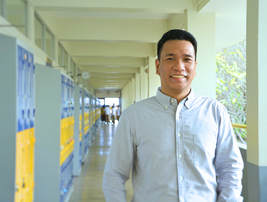 As an education technology specialist, consultant, and trainer, Jim is passionate about designing transformative learning experiences in the classroom that enable learners to become active, reflective, and collaborative creators of knowledge. In 2017, Jim became the first teacher to represent the Philippines as a finalist to the Global Teacher Prize, considered as the Nobel Prize for Teachers, due to his work on elevating the standards of education in the Philippines through a meaningful use of technology in learning, emphasis on values educations to young learners, and providing better access to professional development trainings to the public school system in his home province of Abra in the Cordillera Administrative Region. He is an Accredited Professional Development Consultant, Apple Distinguished Educator, Google Certified Trainer, and Book Creator and SeeSaw apps ambassador. He is currently the chairperson for the Grade School Christian Life Education department and the Head Education Technology Coach of Xavier School. As a global teacher blogger, he continues to share his ideas on technology integration in his website: “Edtech, Go!” at www.francisjimtuscano.com and via his Twitter PLN @jimtuscano.
By Dr. Harriet Marshall, #TeachSDGs Task Force, United Kingdom
Over the last 18 months, I’ve been collecting examples of amazing teachers, young people, and school engagements with the UN’s Sustainable Development Goals (the Global Goals) in England. For many of these schools, the SDGs have been an effective framework for mapping and capturing the work they have already been doing in areas, such as human rights education, global citizenship education, environmental education, or education about social justice. What makes some of the current activities slightly different from what has gone before, is that the initial simplicity of message has allowed for a more accessible and all-inclusive approach to engagement with SDG topics – often helped by the brilliant videos produced by the World’s Largest Lesson. In this piece, I identify models and ingredients of successful practice that have emerged in schools. Most of the school practice I draw upon comes from schools in England that have been involved in the Global Learning Programme (although this is not written on behalf of the GLP and is very much my take on the #TeachSDGs movement using the UK as a case study) – there are many schools that have been actively engaged in #TeachSDGs work independently of this or through other programmes. This is a continuation of an earlier article: Teaching the SDGs – 17 Goals to Transform Our World and Our Classrooms which addresses the ‘why’ of #TeachSDGs. So, to the question of ‘how’… Common Themes Emerging from #TeachSDG Activities in Schools There are a number of key elements to most SDG-related activities highlighted here: First, the SDG framework is often used as the starting point to engage students, school leaders, and other staff. It is also used as a framework to map what sort of global learning activity is already going on in the school – locating other projects, curriculum subjects, teachers, students and community or business links that are already addressing some of the SDG goals. Second, the core values of the SDGs are often linked to schools’ pre-existing values and ethos statements. Schools that aim to achieve a broad and balanced school curriculum regularly make reference to human rights, wellbeing and/or responsible action (example here[i]), and the SDGs link easily to these. Third, the idea of a global learning ‘journey’ is often at the heart of approaches to engagement with the SDGs in schools – especially those that build in models of behaviour or attitudinal change, and knowledge development. As mentioned elsewhere, a key opportunity of engaging with the SDGs is that students and teachers are on a fairly equal footing when it comes to prior knowledge of the SDGs[ii].
Finally, many methods of engagement with the SDGs in schools are aligned to critical thinking and the need to promote associated pedagogies like critical literacy and critical numeracy. For example, some schools involved in global learning in the UK have worked with Philosophy frameworks, such as SAPERE’s P4C.
What follows is one attempt to summarise six successful models of #TeachSDGs practice taking place in some UK Primary, Middle and Secondary schools. The list is not exhaustive and lacks nuances, but it might be of use to others. I look forward to developing it as I learn more about other practices around the world. 6 Models of #TeachSDG Practice
It’s not always easy! Not wishing to dampen enthusiasm, it is important to recognise that #TeachSDGs activity never happens overnight and regularly meets challenges. Acknowledging that UK state-funded schools are in a fairly stable situation when compared to some other countries, many are under strain as a result of funding cuts in real terms, teachers leaving the profession and associated time constraints. Some educators also feel inundated by external agendas for schools and struggle to find the time for new initiatives – even if these initiatives might strengthen existing priorities, enhance learning, and support a broad and balanced school curriculum. Other tensions and challenges associated with engaging with the SDGs in school relate to challenges within global learning more generally. For example, the tension between a focus on individual development and action, versus collaborative action; the potentially intimidating and overwhelming nature of the facts, figures and stories of the SDGs; and the dilemmas of engaging with stereotypes and perceptions, to name but a few! One way in which UK teachers have been fortunate is through the additional support that they can receive from outside global education organisations, NGOs and programmes like the GLP. This support manifests itself as materials and websites, but often teachers and schools most appreciate the support they receive in person through global learning advisors, CPD providers and outside speakers. Another successful strategy has been when schools have linked up through global learning school networks to support each other, share practice and engage in SDG related partnership projects. Finally, it has become increasingly important to show impact in global learning and engagement with the SDGs so that we can both support reporting on Goal 4.7 and individual school aims to show progress and impact.
Some of the Key Ingredients for Successful #TeachSDGs Practice I end with a quick summary of a few of the key ingredients of effective #TeachSDGs practice in schools – in no particular order:
Further questions to think about… I always begin and end my presentations, lectures and teaching with questions:
[1] In fact a recent @MYWorld2030 survey found that youth around the world are more familiar with the SDGs than older generations 
Dr Harriet Marshall is on the #TeachSDGs Task Force and is a National Leader (SW) on the Global Learning Programme (www.glp-e.org.uk). She has been a global education advocate for 20 years, as a teacher, researcher, lecturer, consultant and project leader. Harriet is passionate about education, the SDGs, human rights, gender equality and social justice in education and has researched, written and presented on all of these.
T: @ham1 W: www.harrietmarshall.com/globallearning
By Barbara Anna Zielonka, Norway
The idea of the project was born in Norway in April 2017 when I officially ended my previous project entitled “ The Universe is Made of Tiny Stories” together with 35 schools from all over the world. In May 2017, I invited the most engaged teachers from my previous project to join Loomio which is a decision-making software in order to discuss all the objectives of this year’s project called “Be the Change, Take the Challenge”. After several weeks of active discussions, we decided to launch a brand new project that would focus on the UN’s sustainable development goals (SDGs) and global collaboration.
Why the SDGs?
For the past six years, I have been responsible for a subject called “International English” which is an elective course run throughout the school year. In this course, I have been teaching my students about social, environmental and political issues concerning our planet. Among the most popular ones selected by my students were poverty, water crisis, climate change, and inequality. It struck me that issues of the greatest importance were only covered during that course, and I had to take some action in order to change it. It is my strong belief that students regardless of their age or the type of course they are taking should be taught about the SDGs. If we want to develop the 21st century skills in our students, we need to concentrate on matters that concern everyone. Teaching about the SDGs should be our main priority as we will not be able to tackle world problems if we do not start acting together. Why global collaboration? It is not surprising that the Global Sustainable Goals are built on the idea of partnership. Without cooperation and collaboration, we will not be able to achieve these goals. That is why Be the Change, Take the Challenge project emphasizes the power of global collaboration. Students and teachers who have already joined our project have one common goal and are going to work toward it- they want to be the change and take that challenge. Throughout the eight months, 80 schools from all over the world will participate in a number of tasks and assignments that will help students become acquainted with the SDGs and develop their problem solving skills. Being exposed to so many different thoughts, attitudes, opinions, and solutions will be an eye opener to many students who have never worked in international teams before. What is more, students will be invited to numerous Skype sessions so they could improve their speaking and presentation skills in real-time setting. Why should you join us? Joining our project, you will be able to reinforce global competencies in your students. These competencies are vital for the creation of global learners who need to understand the importance of the SDGs and be able to deal with them. It is a complex goal, but if we act together we will be able to help our students create opportunities for all the people living on Earth. We need to focus on knowledge, skills and attitudes by collaborating and cooperating together. As a teacher, you will be able to meet other teachers from all over the world, build your professional learning network and improve your ICT skills.
Are you READY to jump into the amazing project and become our project partner? Take a look at our website and let us know your interest: https://bethechangetakethechallenge.wordpress.com

Barbara Anna Zielonka is an English teacher and a teacher trainer at Nannestad High School, Norway. She is a Certified Microsoft Innovative Educator, co-author of Skills coursebook, winner of the " Gullepleprisen" 2017, the Great Global Project Challenge Grantee, and project coordinator of several multinational digitally-based projects. Barbara believes in the power of global project-based learning and continuous professional development. She loves collaborating and connecting with other educators from across the globe. You can learn more about Barbara and her work by following her on Twitter at @bar_zie or visiting her website https://barbaraannaprojects.wordpress.com/.
|
AuthorSTeachSDGs Team & Contributors Archives
November 2019
Categories |
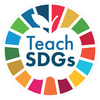

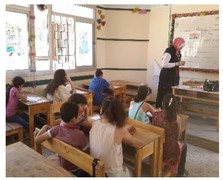


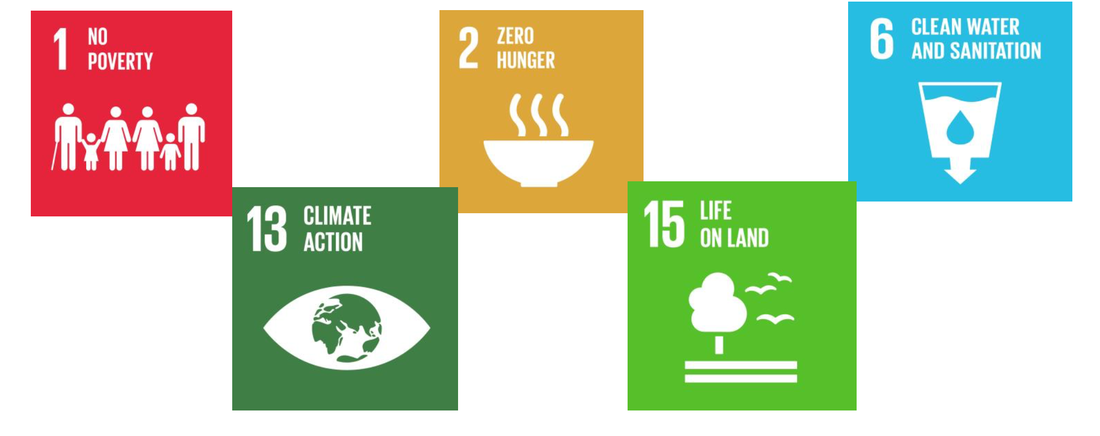
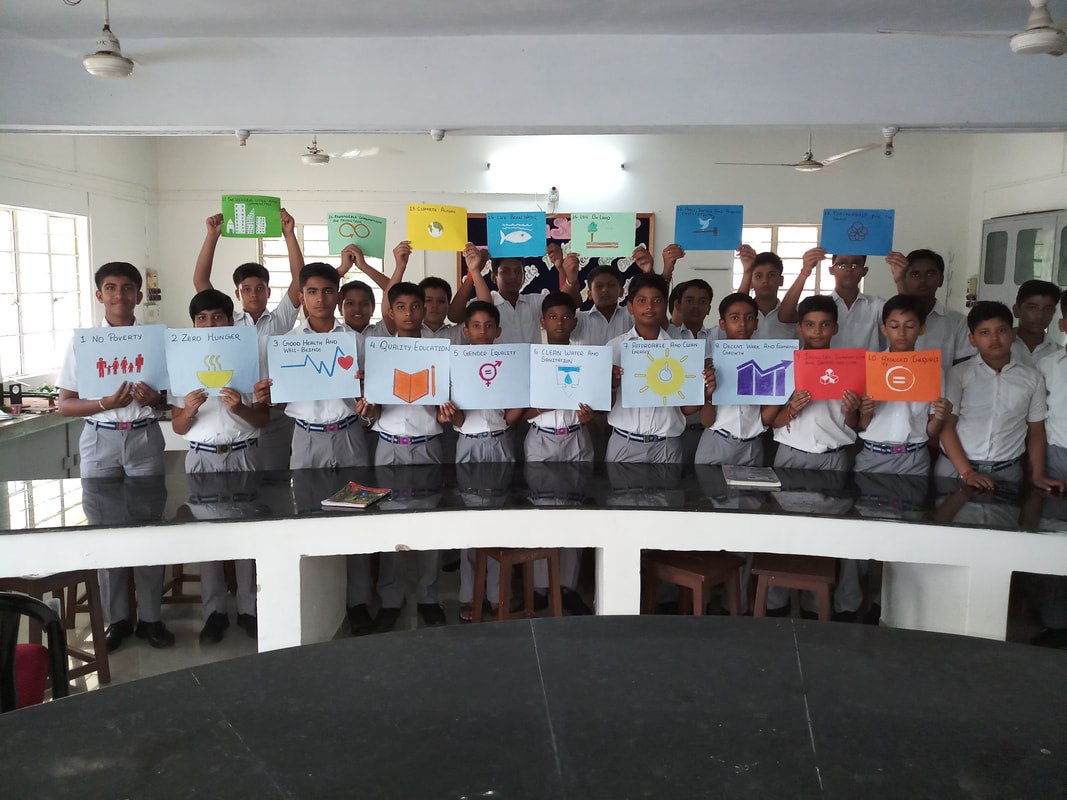


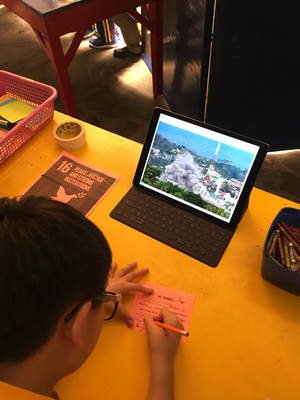


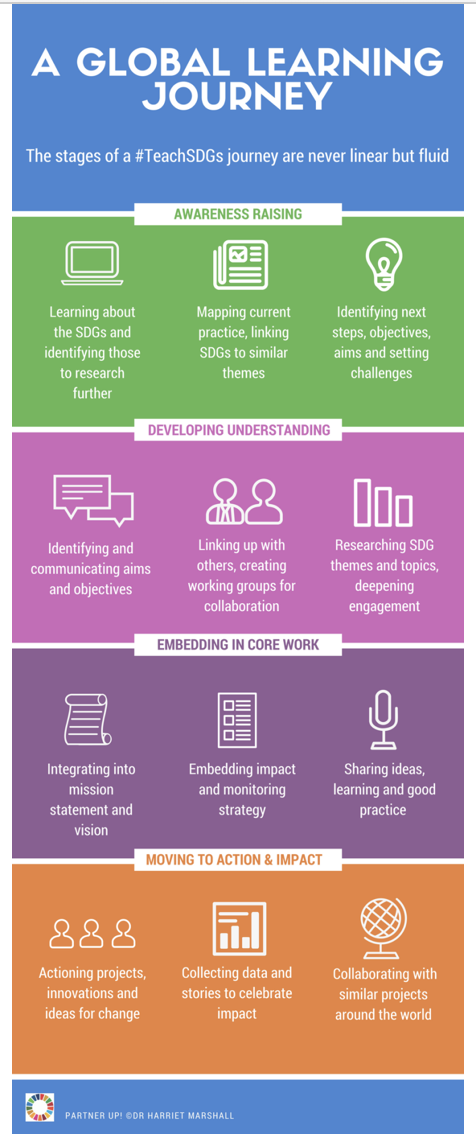

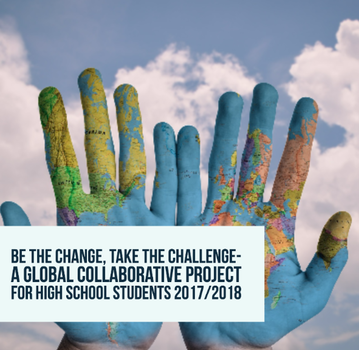
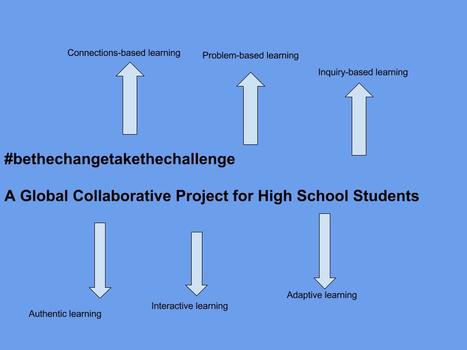

 RSS Feed
RSS Feed